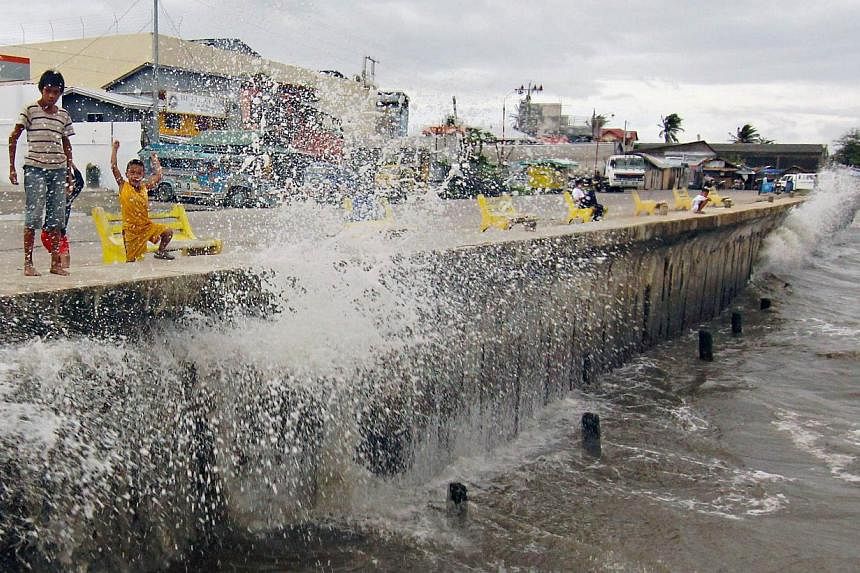MANILA (AFP) - Terrifying winds and intense rain pounded the eastern Philippines Saturday as millions sheltered from a giant storm that threatened more devastation for a nation battling to recover from a catastrophic super typhoon.
Typhoon Hagupit roared in from the Pacific Ocean and crashed into the remote fishing communities of Samar island on Saturday night with wind gusts of 210 kmh, the local weather agency Pagasa said. The wind strength made Hagupit the most powerful storm to hit the Philippines this year.
Fearful of a repeat of last year when Super Typhoon Haiyan claimed more than 7,350 lives, the government had undertaken a massive evacuation effort ahead of Hagupit that saw millions seek shelter.
"This is it. I know you are tired, not enough sleep, not enough food, too much coffee," Interior Secretary Mar Roxas said a few hours before the typhoon hit, calling for a final effort to bring more people in vulnerable areas to safe shelters.
"This is our last push. Every person we can save now is one less we have to look for after the typhoon passes."
Roxas was speaking at a nationally televised planning conference from Samar, having based himself in one of the areas expected to be among the first hit to oversee preparations there.
Hagupit was forecast to take three days to cut across the Philippines, passing over mostly poor central regions, while also bringing heavy rain to the densely populated capital of Manila slightly to the north.
Damage assessments from communities initially hit are not likely to be known until after daybreak on Sunday, as power and mobile networks have been lost in those areas.
Tens of millions of people live in the typhoon's path, including those in the central Philippines who are still struggling to recover from the devastation of Super Typhoon Haiyan, which hit 13 months ago.
Haiyan was the strongest storm ever recorded on land, with winds of 315 kmh. It also generated tsunami-like storm surges that claimed more than 7,350 lives, making it one of the Philippines' deadliest natural disasters.
In Tacloban, one of the cities worst-hit by Haiyan, thousands of traumatised typhoon survivors crammed into schools, churches and other evacuation centres on Saturday.
"We are afraid. People are panicking," Alma Gaut, 36, who lost her mother and her home during Haiyan, told AFP on Saturday morning as she huddled in the second floor of a university, sheltering with more than 1,000 other people.
"All we have is a tattered, plastic sheet to sleep on. My grandmother is already feeling the cold."
Outside, the town appeared almost deserted as heavy rain fall and trees bent with the wind in what residents feared was an ominous prelude to another disaster.
In Catbalogan, the capital of neighbouring Samar island, authorities were preparing for water surges that the government warned could be up to 4.5m high. More than 10,000 people had been ordered into safe buildings, according to mayor Stephany Uy-Tan.
"We don't want people to panic but I ordered forced evacuations so they would be safe," Uy-Tan told AFP by phone.
"There are always some people who say the wind is not yet that strong, that there is still no rain... we just have to explain that there is a huge possibility of a storm surge."
In the eastern region of Bicol alone, authorities said they were aiming for 2.5 million people - half the local population - to be in evacuation centres by Saturday night.
The Philippines endures about 20 major storms a year which, along with regular earthquakes and volcano eruptions, make it one of the world's most disaster-plagued countries.
The storms regularly claim many lives but they are becoming more violent and unpredictable because of climate change, according to the United Nations and many scientists.
Haiyan was the world's deadliest natural disaster last year. In 2011 and 2012, there were consecutive December storms that together claimed more than 3,000 lives and were the word's deadliest disasters of those years.
And in July this year, Typhoon Rammasun killed 111 people when it cut across Manila, paralysing the capital for days, and other parts of the main island of Luzon.

